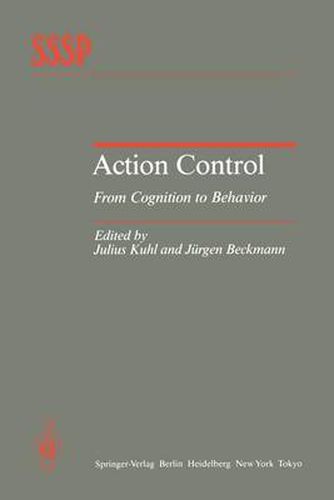Readings Newsletter
Become a Readings Member to make your shopping experience even easier.
Sign in or sign up for free!
You’re not far away from qualifying for FREE standard shipping within Australia
You’ve qualified for FREE standard shipping within Australia
The cart is loading…






This title is printed to order. This book may have been self-published. If so, we cannot guarantee the quality of the content. In the main most books will have gone through the editing process however some may not. We therefore suggest that you be aware of this before ordering this book. If in doubt check either the author or publisher’s details as we are unable to accept any returns unless they are faulty. Please contact us if you have any questions.
It is not thought as such that can move anything, but thought which is for the sake of something and is practical. This discerning insight, which dates back more than 2000years to Aristotle, seems to have been ignored by most psycholo gists. For more than 40years theories of human action have assumed that cogni tion and action are merely two sides of the same coin. Approaches as different as S-O-R behaviorism,social learning theory, consistency theories,and expectancy value theories of motivation and decision making have one thing in common: they all assume that thought (or any other type of cognition) can move any thing, that there is a direct path from cognition to behavior. In recent years, we have become more and more aware of the complexities in volved in the relationship between cognition and behavior. People do not always do what they intend to do. Aside from several nonpsychological factors capable of reducing cognition-behavior consistency, there seems to be a set of complex psychological mechanisms which intervene between action-related cognitions, such as beliefs, expectancies, values, and intentions,and the enactment of the be havior suggested by those cognitions. In our recent research we have focused on volitional mechanismus which presumably enhance cognition-behavior consistency by supporting the main tenance of activated intentions and prevent them from being pushed aside by competing action tendencies.
$9.00 standard shipping within Australia
FREE standard shipping within Australia for orders over $100.00
Express & International shipping calculated at checkout
This title is printed to order. This book may have been self-published. If so, we cannot guarantee the quality of the content. In the main most books will have gone through the editing process however some may not. We therefore suggest that you be aware of this before ordering this book. If in doubt check either the author or publisher’s details as we are unable to accept any returns unless they are faulty. Please contact us if you have any questions.
It is not thought as such that can move anything, but thought which is for the sake of something and is practical. This discerning insight, which dates back more than 2000years to Aristotle, seems to have been ignored by most psycholo gists. For more than 40years theories of human action have assumed that cogni tion and action are merely two sides of the same coin. Approaches as different as S-O-R behaviorism,social learning theory, consistency theories,and expectancy value theories of motivation and decision making have one thing in common: they all assume that thought (or any other type of cognition) can move any thing, that there is a direct path from cognition to behavior. In recent years, we have become more and more aware of the complexities in volved in the relationship between cognition and behavior. People do not always do what they intend to do. Aside from several nonpsychological factors capable of reducing cognition-behavior consistency, there seems to be a set of complex psychological mechanisms which intervene between action-related cognitions, such as beliefs, expectancies, values, and intentions,and the enactment of the be havior suggested by those cognitions. In our recent research we have focused on volitional mechanismus which presumably enhance cognition-behavior consistency by supporting the main tenance of activated intentions and prevent them from being pushed aside by competing action tendencies.